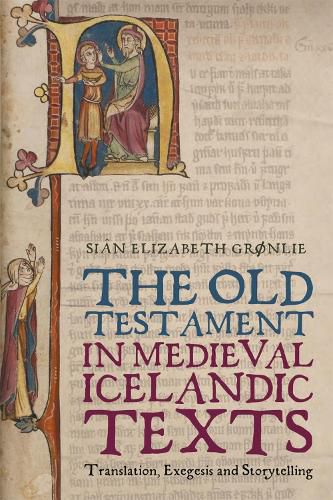Readings Newsletter
Become a Readings Member to make your shopping experience even easier.
Sign in or sign up for free!
You’re not far away from qualifying for FREE standard shipping within Australia
You’ve qualified for FREE standard shipping within Australia
The cart is loading…






Demonstrates the essential nature of biblical translation and adaptation to Old-Norse-Icelandic literature.
The historical narratives of the Old Testament/Hebrew Bible have much in common with Icelandic saga literature: both are invested in origins and genealogy, place-names, family history, sibling rivalry, conflict and its resolution. Yet the comparison between these two literatures is rarely made, and biblical translations in Old Norse-Icelandic have been neglected as a focus of literary study. This book aims to redress this neglect. It shows how the likeness between biblical narrative and saga narrative has shaped the reception of the Old Testament in medieval Iceland, even through multiple layers of translation and exegesis.
It draws on a wide variety of texts, including homilies, saints' lives, world histories, encyclopaedic works, and the biblical translations collectively known as Stjorn, to explore how medieval Icelanders engaged with Old Testament narrative in the light of their own vernacular tradition of storytelling. And above all, it argues that the medieval Icelanders understood and recognised in these well-known biblical stories a narrative art that was strikingly akin to their own.
$9.00 standard shipping within Australia
FREE standard shipping within Australia for orders over $100.00
Express & International shipping calculated at checkout
Demonstrates the essential nature of biblical translation and adaptation to Old-Norse-Icelandic literature.
The historical narratives of the Old Testament/Hebrew Bible have much in common with Icelandic saga literature: both are invested in origins and genealogy, place-names, family history, sibling rivalry, conflict and its resolution. Yet the comparison between these two literatures is rarely made, and biblical translations in Old Norse-Icelandic have been neglected as a focus of literary study. This book aims to redress this neglect. It shows how the likeness between biblical narrative and saga narrative has shaped the reception of the Old Testament in medieval Iceland, even through multiple layers of translation and exegesis.
It draws on a wide variety of texts, including homilies, saints' lives, world histories, encyclopaedic works, and the biblical translations collectively known as Stjorn, to explore how medieval Icelanders engaged with Old Testament narrative in the light of their own vernacular tradition of storytelling. And above all, it argues that the medieval Icelanders understood and recognised in these well-known biblical stories a narrative art that was strikingly akin to their own.